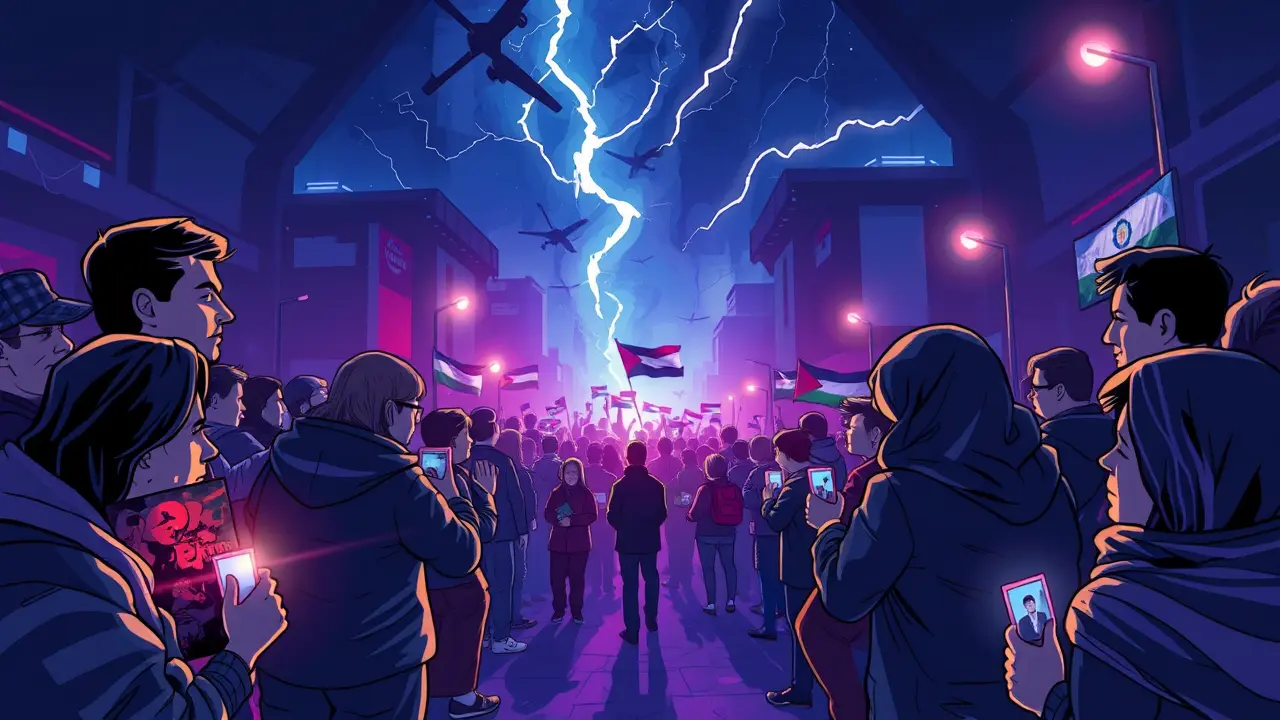Families celebrate as Israel and Hamas reach hostage deal.
A wave of raw, cathartic emotion swept through Tel Aviv’s so-called Hostage Square tonight, a place that has become a grim amphitheater of public grief and desperate hope, as news broke that Israel and Hamas had finally inked the first phase of a deal to bring captives home. For the families who have held vigil here for weeks, their faces etched with a unique agony known only to those waiting for a loved one held in the dark, the announcement was not merely a political headline; it was a seismic crack in the wall of their despair, a first, fragile thread of light after an interminable darkness.This is not the end—far from it—but for a moment, the relentless churn of geopolitics paused, and the human spirit, so often the forgotten casualty in these conflicts, was allowed to breathe. I’ve been reading the Reuters ticker every morning since October 7th, watching the casualty numbers climb and the diplomatic statements grow more convoluted, but nothing in those dispatches could capture the sheer, physical weight that seemed to lift from this square.One woman, her hands trembling as she clutched a photograph of her son, simply repeated, 'He’s coming home, he’s coming home,' her words a quiet mantra against the backdrop of cheers and weeping. This breakthrough, brokered through Qatari and Egyptian mediators after painstaking, stop-start negotiations, reportedly involves a multi-day truce and the release of dozens of women and children held in Gaza in exchange for Palestinian women and minors imprisoned in Israel.The mechanics are complex, a delicate and perilous choreography of trust that neither side truly possesses, but the immediate consequence is a temporary ceasefire, a desperately needed respite for civilians on both sides of the border who have endured a relentless barrage of violence. The path to this point has been littered with false hopes and shattered deadlines.Recall the weeks of stalemate, where demands for a comprehensive ceasefire clashed with unwavering military objectives, where the fate of individuals became bargaining chips in a much larger, more brutal game. The Israeli government, under immense internal pressure from the families' tireless campaign, faced the agonizing choice between the imperative to eradicate a terrorist threat and the sacred duty to recover its citizens.Hamas, cornered and battered, saw a strategic asset in the hostages, a leverage point to force a pause and regroup. Into this maelstrom stepped the mediators, working the phones in Doha and Cairo, navigating a labyrinth of mutual distrust.The agreement they’ve forged is fragile, a house of cards in a hurricane. What happens after the initial exchanges? Does the truce hold? Does it become a foundation for a more durable peace, or simply an intermission before a more violent second act? Security analysts I’ve spoken to are deeply skeptical, pointing to the fundamental, irreconcilable goals of the two adversaries.The Israeli war cabinet has already stated its intention to resume military operations with full force once the hostage return is complete, while Hamas will likely use the pause to rearm and reposition. For the families in Tel Aviv, however, such strategic calculations are abstractions.Their world has narrowed to a single, burning point: a name, a face, a seat at the table that has been empty for too long. Their vigil, a powerful testament to citizen activism, has fundamentally altered the political calculus in Israel, forcing the government’s hand and proving that even in the face of overwhelming force, the human cry for a father, a sister, a child, can echo in the halls of power.Tonight, that cry was answered, if only partially. The road ahead remains shrouded in uncertainty, but for the first time in a long time, it is a road that leads somewhere other than deeper into the night.
HO
HopefulSkeptic12 hours ago
finally some good news for those families, been waiting for this for weeks hope it actually holds this time
0
JU
JustSomeGuy12 hours ago
finally some good news tbh, been waiting for this for way too long smh
0
GL
GlobalNomad14 hours ago
we see these fragile truces everywhere, from conflict zones in europe to asia, and the human toll is always the same tbh just hope this one actually holds for the families waiting
0
© 2025 Outpoll Service LTD. All rights reserved.
